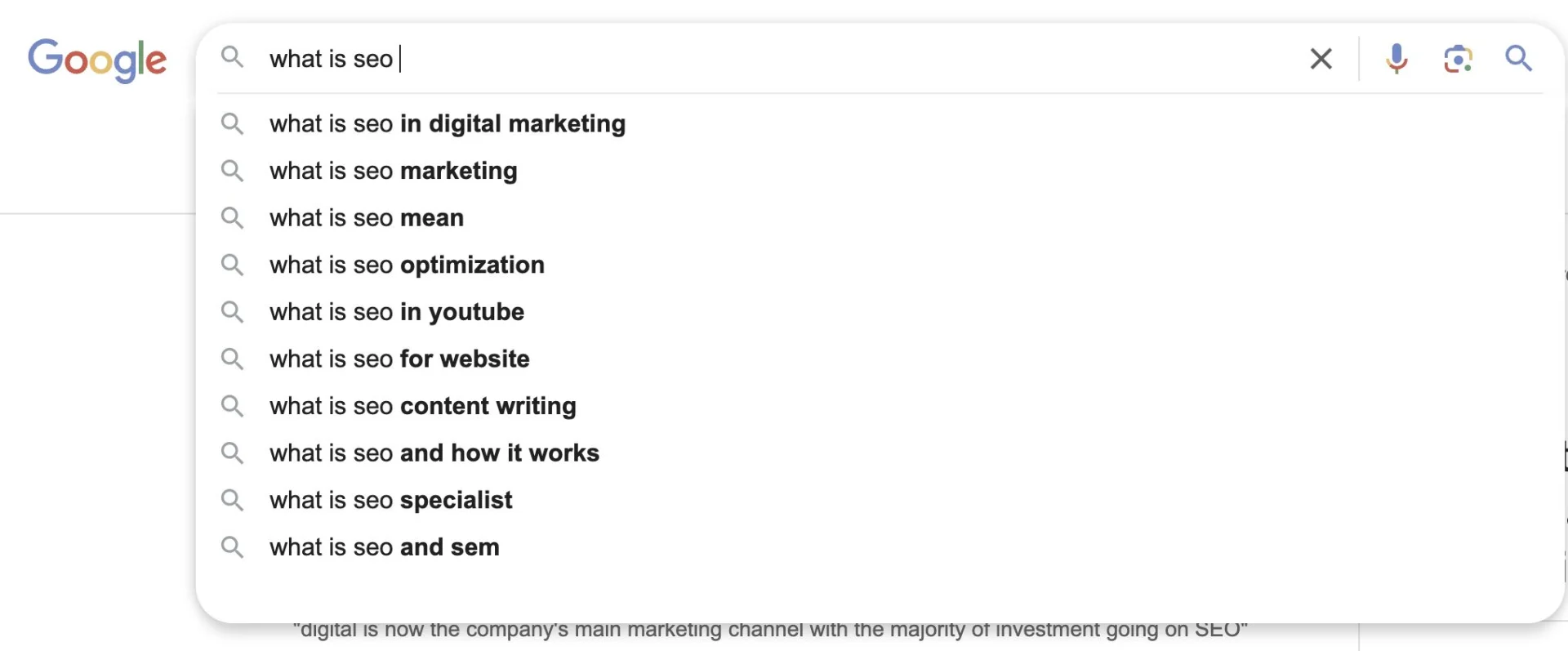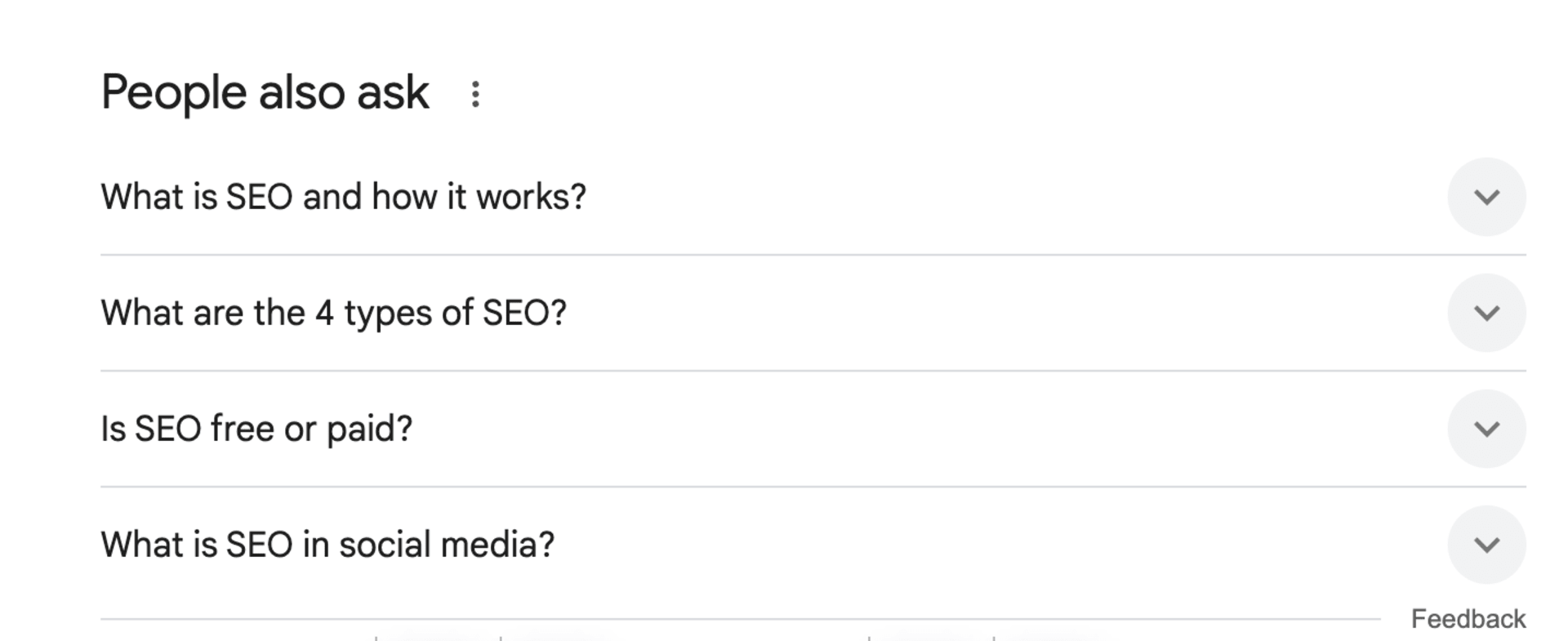Harnessing Google Autocomplete & People Also Ask: A Proven SEO and Keywords Strategy
In today’s competitive digital landscape, leveraging seo and keywords effectively is essential for understanding market trends and refining your overall SEO strategy. By analyzing which keywords drive traffic to top-performing websites—including those of your competitors—you can uncover fresh opportunities, optimize your content, and significantly boost your search engine rankings.
Unlocking the Potential of Google Autocomplete and People Also Ask
Keyword planning is the backbone of successful SEO, and two powerful tools—Google Autocomplete and the “People Also Ask” (PAA) feature—can transform the way you develop your content strategy. These free resources offer invaluable insights into user intent and long-tail keyword opportunities, all while keeping a close eye on the broader landscape of seo and keywords.
Exploring Google Autocomplete
Google Autocomplete is more than just a time-saver; it’s a dynamic source of keyword ideas that reveals the search habits of millions of users.

How It Functions
As you begin typing in Google’s search box, the system leverages machine learning to generate a list of suggestions. These predictions stem from:
Historical Search Trends: Reflecting popular queries from a wide user base.
Trending Topics: Showcasing current searches influenced by location and language.
Personal Search Behavior: Although you can bypass personalized results by using Incognito mode.
These features help you identify specific, long-tail phrases that you might not have considered otherwise.
Advantages for Keyword Research
Unearth Niche Keywords: Autocomplete can reveal unique phrases that capture very specific audience segments.
Decipher User Intent: The suggestions give clues about what users are actually seeking.
Zero Cost: This tool is completely free and accessible to everyone, from SEO beginners to experts.
Harnessing the Power of People Also Ask (PAA)
The People Also Ask feature is an interactive element in Google’s search results that displays a series of related questions. It serves as a goldmine for understanding the broader context of user queries around seo and keywords.
How PAA Operates
When you search for a query, Google presents a list of related questions beneath the main results. Each question can be expanded to reveal a snippet from a relevant webpage, offering:
Insight into User Queries: Highlighting the real concerns and interests of searchers.
Content Inspiration: Serving as a launchpad for blog topics, FAQs, and in-depth guides.
Enhanced Visibility: Appearing prominently in search results to drive additional traffic.
Discover more actionable PAA optimization techniques with comprehensive guides from Surfer SEO.
Applying PAA to Keyword Planning
Expand Your Keyword List: Click through the questions to uncover an array of related queries.
Shape Your Content Strategy: Answering these questions in your articles boosts your chances of appearing in PAA boxes.
Develop FAQ Sections: Implement these common questions in your website’s FAQ area, utilizing proper schema markup for better visibility.
Integrating Autocomplete and PAA for a Winning Keyword Strategy
Combining the strengths of Google Autocomplete and People Also Ask provides a holistic view of search intent—from broad topics to detailed, long-tail queries related to seo and keywords.
A Step-by-Step Approach
Initiate with a Broad Query: Use an incognito window to input your main keyword and gather unbiased Autocomplete suggestions.
Compile Your Findings: Note down the long-tail keywords and related phrases that surface.
Investigate the PAA Section: Search for your keyword to review the array of related questions in the PAA box.
Synthesize Your Data: Merge insights from both tools to pinpoint keywords that meet user intent and have lower competition.
Strategize Your Content: Use the refined list to craft blog posts, FAQs, and guides that directly answer these queries.
For a practical, automated approach, consider tools like the Python SEO Keyword Research Tool that integrates Google Autocomplete, PAA, and related searches to streamline your process.
MEDIUM.COM
Essential Best Practices
Leverage Incognito Mode: Ensure your search results aren’t personalized to maintain neutrality.
Stay Current with Trends: Regularly check Autocomplete and PAA as they reflect real-time search behavior.
Combine with Paid Tools: While these free tools are powerful, complementing them with paid research tools can offer additional metrics like search volume and competition.
Focus on Clarity: When integrating insights from PAA, deliver concise, direct answers that mimic the brevity of Google’s featured snippets.
Conclusion
Mastering the art of seo and keywords is a game-changing tactic in your SEO toolkit. Google Autocomplete and People Also Ask are not only free but also potent resources for discovering long-tail keywords and deciphering user intent. Integrating these tools into your keyword planning strategy enables you to create highly targeted, relevant content that stands out in search results.
Embrace these insights to build a more data-driven, competitive SEO strategy, and watch your organic traffic soar. Happy keyword hunting!
Please let us know if you enjoyed this blog post. Share it with others to spread the knowledge! If you believe any images in this post infringe your copyright, please contact us promptly so we can remove them.